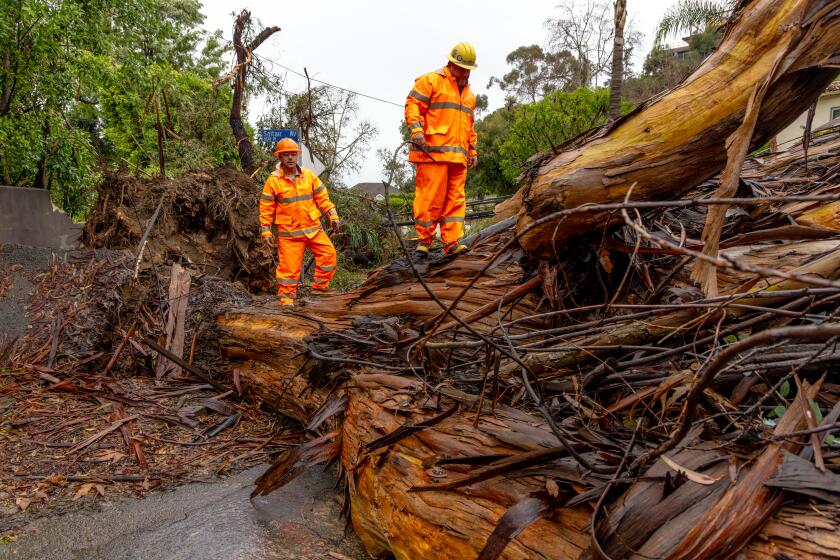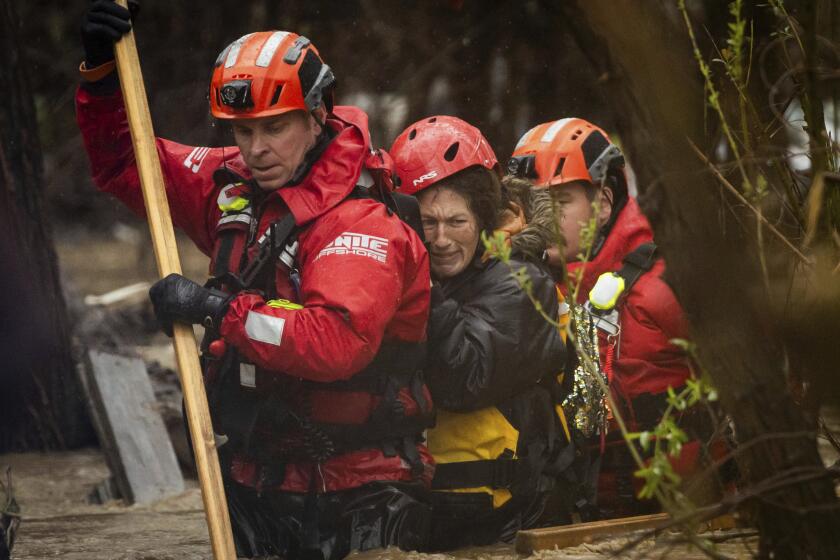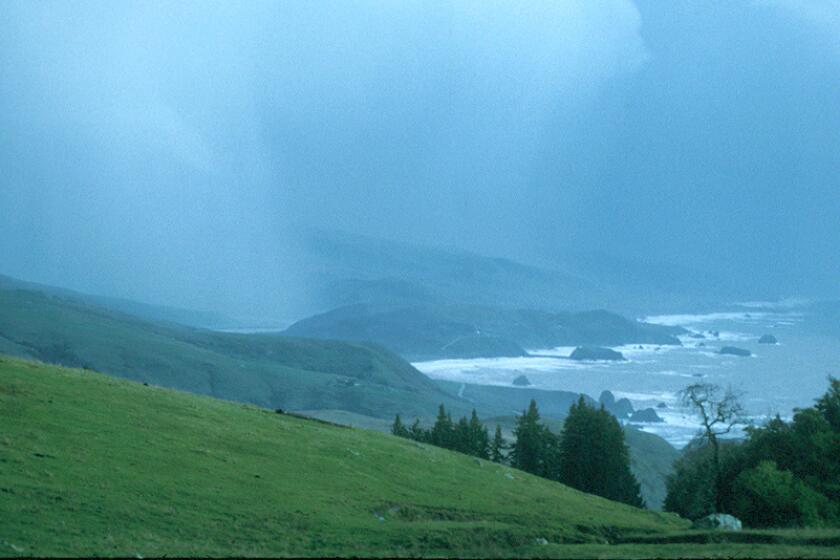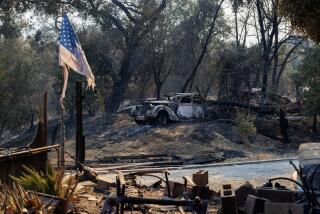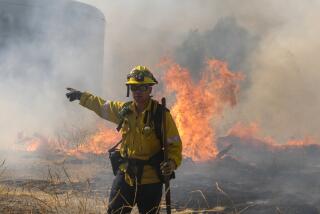Does insurance cover flooding and mudslides?
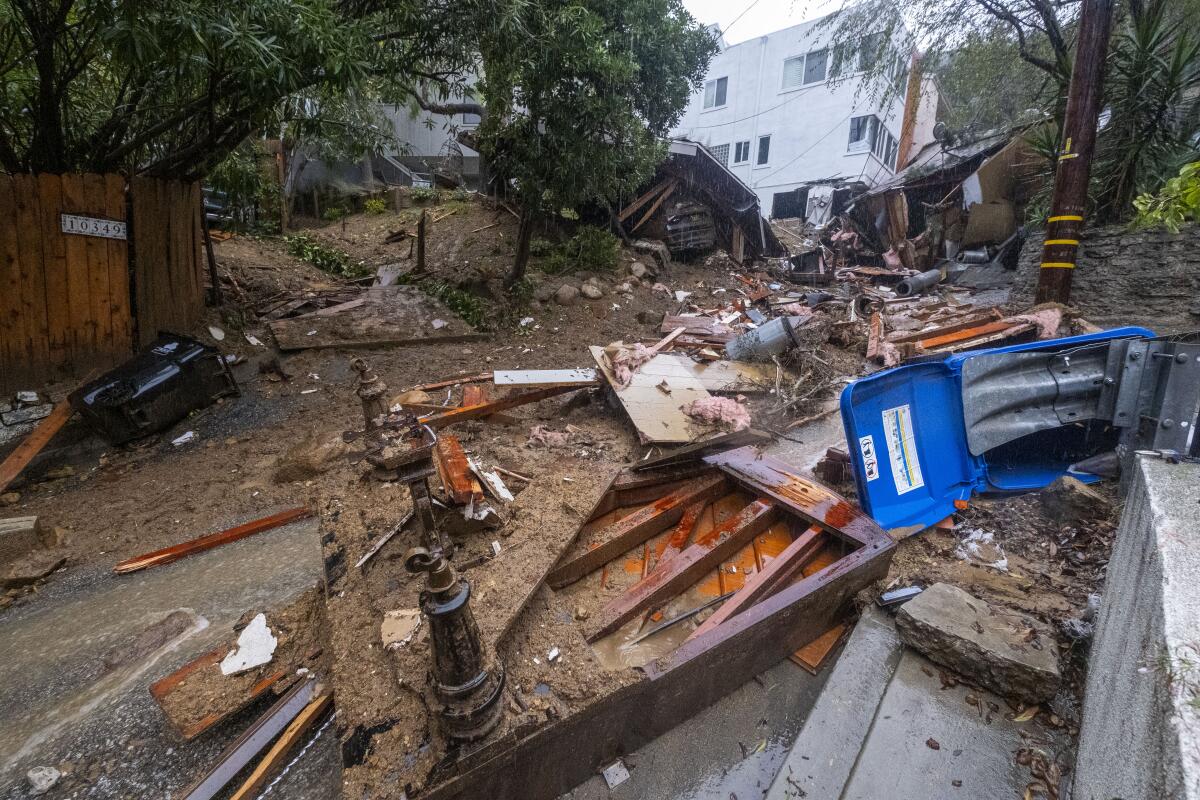
This week’s rain is turning streets into creeks and hillsides into mudslides. Homeowners across Southern California are facing major damage to their homes as a result — and in most cases, they won’t get any help cleaning up the mess from their insurance companies.
The standard homeowners’ policy does not cover losses from flood damage. Mudslides, mud flows and debris flows aren’t covered by typical homeowners’ insurance, either — though in particular circumstances, a homeowner’s policy might cover some of the damage from these events. Damage from falling trees or other wind-related impacts should be covered by homeowners’ policies, however, and the comprehensive coverage in an auto insurance policy should cover any damage to Californians’ cars.
Flood insurance has been underwritten by the federal government since 1968, as part of the National Flood Insurance Program. Homeowners have to purchase this coverage separately from the NFIP, which is administered by the Federal Emergency Management Agency, if they want their house to be protected from flood damage.
But Californians, by and large, haven’t ponied up for flood insurance. Out of the over 4.6 million flood policies in the country, 190,000 — just over 4% — are for California homes and businesses, according to data from the NFIP. In the eight Southern California counties under a state of emergency from the current storm, only 52,820 homes and businesses are covered.
Los Angeles County, home to nearly 10 million people, has just 14,580 flood insurance policies on the books.
The good news for policy-holders is that flood insurance covers most of the ways that dirt, water and debris can damage a home, as long as a major flood event is in progress.
Essentially, as long as mud or debris that damages the home is being carried by water, then flood insurance kicks in, said Janet Ruiz, director of strategic communication at the Insurance Information Institute, an industry group. The technical terms for these sources of destruction are mudflows and debris flows.
Falling trees killed at least three people in Northern California as a winter storm walloped the state. The system is slowly moving across L.A. and Orange counties.
If a wildfire is involved in creating the mud or debris which then flows into a house, the fire coverage section of a typical homeowners’ policy can cover that damage. This kicked in during the deadly 2018 floods and mudflows in Montecito, which claimed 21 lives and led homeowners to file $388 million in insurance claims. Since the floods came on the heels of the massive Thomas fire in late 2017, that incident was deemed the “proximate cause” of the damage. But this specific set of circumstances is not common, and after a relatively sedate 2023 fire season, is unlikely to help many homeowners dealing with damage this week.
But mudslides — which have a technical definition distinct from the colloquial use of the word — are not covered by flood insurance, and are rarely covered by any kind of insurance policy at all. If water is picking up mud and debris and moving it into a home, that’s a mudflow in insurers’ books. But if the wet ground that a home is on slides away, shifting the house off its foundations (or causing it to fall off the side of a hill), then that’s a mudslide, and few policies will help the homeowner out.
“That’s ground movement, so that’s homes sliding off their foundation,” Ruiz said. “That’s not covered under a homeowners’ or flood insurance policy.”
The same goes for landslides, like the one that caused a cluster of houses in Rolling Hills Estates to pitch into a ravine in 2023.
Atmospheric rivers are descending on Southern California. Here’s how to prepare and stay safe before and during the storms, heavy rain and potential flooding.
But in a very specific scenario, a normal homeowners’ policy will cover some damage related to a mudslide or other earth movement: “If your neighbor’s house slides into yours, then their homeowners’ insurance would be liable to pay for your house,” Ruiz said.
Private insurers do offer flood coverage, and Ruiz said that it’s becoming more popular among the wealthy. The federal policy caps out at covering $250,000 in damage to a residential property and $100,000 for its contents. Even though flood losses are typically partial — Ruiz points out that California floods rarely affect the second stories of homes — some homeowners turn to the private market for more coverage.
Then there’s the basement issue. The NFIP does not cover most damage to basements, which pushes some homeowners to buy specific policies for their underground lairs. “There’s some pretty cool basements out there,” Ruiz said; “some people really trick them out.”
More to Read
Inside the business of entertainment
The Wide Shot brings you news, analysis and insights on everything from streaming wars to production — and what it all means for the future.
You may occasionally receive promotional content from the Los Angeles Times.
